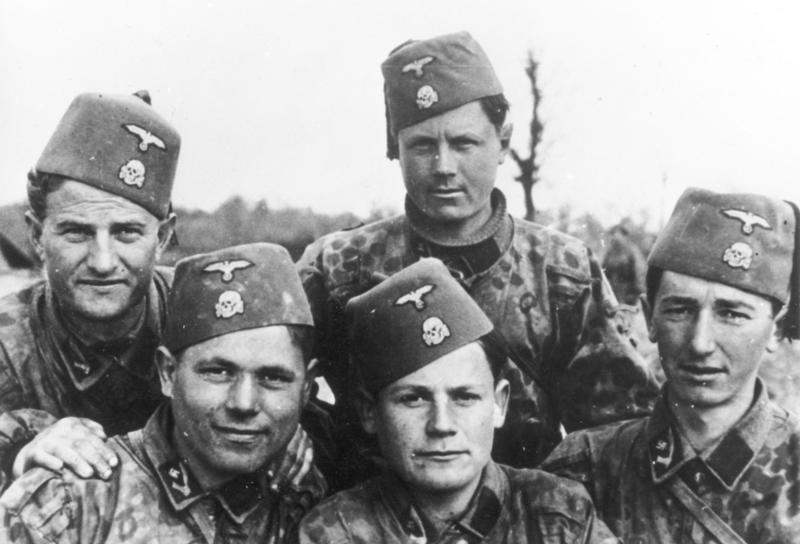
The Handschar Division, officially known as the 13th Waffen Mountain Division of the SS Handschar (1st Croatian), was a notable unit during World War II. It was formed by Nazi Germany primarily from Bosnian Muslims, as well as Croatian Catholics, and named after the traditional Turkish scimitar called a “handschar.” The creation of this division was part of a broader strategy by the Nazis to exploit ethnic and religious tensions in the Balkans to their advantage.
Formation and Composition
The Handschar Division was established in 1943, amidst the complex and violent backdrop of the Balkan Peninsula during World War II. The region was characterized by a mix of ethnicities and religions, including Serbs, Croats, Bosnian Muslims, and others, often with deep-seated historical grievances. The Nazis aimed to harness these divisions, presenting themselves as liberators to certain groups to gain their support against the Yugoslav Partisans and the Chetniks, who were fighting against Axis occupation.
Himmler, the head of the SS, saw the Bosnian Muslims as a potentially loyal and effective fighting force due to their historical martial tradition and their anti-communist sentiments. The formation of the Handschar Division was thus not only a military strategy but also a political maneuver, aimed at fostering loyalty and cooperation from the Bosnian Muslim community.
Training and Deployment
Recruits for the Handschar Division underwent training in Neuhammer, Germany. The division was initially well-equipped and trained to operate in mountainous and forested terrains, reflecting the geography of the Balkans. The division’s insignia featured the traditional handschar sword, symbolizing their distinctive identity within the SS.
Upon completion of their training, the Handschar Division was deployed in Bosnia and Herzegovina and later in Croatia. Their primary tasks were counter-insurgency operations, aimed at suppressing the Yugoslav Partisans, a formidable resistance movement led by Josip Broz Tito. The division also engaged in anti-Semitic activities, aligning with the broader genocidal policies of the Nazis.
Operational History
The Handschar Division’s operational history was marked by significant brutality. They were involved in numerous atrocities against the civilian population, particularly targeting Serbs, Jews, and Roma. These actions included mass executions, village burnings, and other forms of terror intended to destabilize the region and crush resistance.
However, the effectiveness of the Handschar Division was mixed. While they initially conducted successful operations against Partisan forces, their impact waned over time. Issues of discipline, morale, and desertion plagued the division. Many recruits became disillusioned with the Nazis and the SS, leading to a high rate of desertion and defections to the Partisans. Additionally, internal conflicts between different ethnic groups within the division further undermined their cohesion and effectiveness.
Decline and Disbandment
By late 1944, the Handschar Division was in decline. The changing tides of the war, with the Allies advancing on multiple fronts and the Partisans gaining strength, rendered the division increasingly ineffective. The desertion rate escalated, and the division suffered heavy losses in several engagements with the Partisans and Soviet forces.
In March 1945, the Handschar Division was officially disbanded. Its remnants were either absorbed into other SS units or captured by the Allies. The dissolution of the division marked the end of one of the more unusual and controversial military units of World War II.
Legacy
The legacy of the Handschar Division is complex and contentious. For many, the division symbolizes the exploitation of ethnic and religious tensions by external powers, a theme that has recurred throughout the history of the Balkans. The atrocities committed by the division left deep scars in the collective memory of the region, contributing to the enduring ethnic and religious animosities.
In the post-war period, the story of the Handschar Division has been used variously in nationalist narratives across the former Yugoslavia. For some, it represents a dark chapter of collaboration and betrayal, while for others, it is a tale of manipulation and victimization by greater powers.
Conclusion
The Handschar Division stands as a stark example of how ethnic and religious identities can be manipulated in the service of broader geopolitical aims. Its formation, operational history, and eventual dissolution offer critical insights into the complexities of wartime collaboration and resistance, the nature of Nazi strategies in the Balkans, and the enduring impact of these events on regional histories and identities.